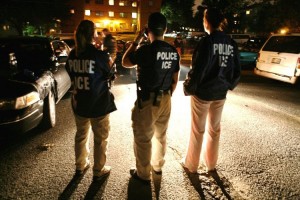 In the spring and summer of 2014, tens of thousands of unaccompanied children, mostly from Central America’s Northern Triangle (El Salvador, Guatemala and Honduras), crossed the United States’ southwest border and sparked a political and humanitarian crisis.
In the spring and summer of 2014, tens of thousands of unaccompanied children, mostly from Central America’s Northern Triangle (El Salvador, Guatemala and Honduras), crossed the United States’ southwest border and sparked a political and humanitarian crisis.
Between March and June, 36,075 unaccompanied children were apprehended or turned themselves into US Border Patrol, making up more than half of the unaccompanied children (UAC) apprehended in all of fiscal year 2014. Although migration does usually increase in the summer months, the acuteness of the surge was unlike anything seen before on the US southwest border.
Migration from the Northern Triangle, rather than Mexico, accounted for the rise in unaccompanied alien children. In fiscal year 2014, Mexicans accounted for only 23% of apprehended UACs, down from 45% a year before, and 75% in 2011. Almost all other unaccompanied children migrated from the Northern Triangle.
Federal agencies responsible for border control struggled to find the resources to detain and process the children. President Obama allowed the Department of Homeland Security (DHS) to use funds allocated for other agencies to expand migrant detention and processing facilities, and border authorities were forced to house detained children in military bases and warehouses.
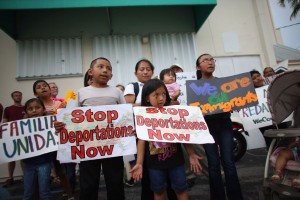 The nature of the migrants presented the US government with specific difficulties. A 2008 law guarantees undocumented children an appearance before an immigration judge to prevent them from being summarily deported by border authorities. Furthermore, because many of the children’s countries of origin do not directly border the United States, authorities need to go through special logistic and administrative processes to deport them to their countries. The same law also mandates that the children be placed in homes with sponsors or relatives and that there be a full investigation to determine if they qualify for refugee status under U.S. or international law. These processes can take years.
The nature of the migrants presented the US government with specific difficulties. A 2008 law guarantees undocumented children an appearance before an immigration judge to prevent them from being summarily deported by border authorities. Furthermore, because many of the children’s countries of origin do not directly border the United States, authorities need to go through special logistic and administrative processes to deport them to their countries. The same law also mandates that the children be placed in homes with sponsors or relatives and that there be a full investigation to determine if they qualify for refugee status under U.S. or international law. These processes can take years.
In 2013, before the surge, the issue of unaccompanied child migration from the Northern Triangle had caught the attention of the Office of the United Nations High Commissioner for Refugees (UNHCR). The UNHCR surveyed unaccompanied Central American in the custody of the US government and found that at least 70% of them would qualify for refugee status under the 1967 Protocol Relating to the Status of Refugees, of which the United States and Mexico are signatories. The children’s motivations to leave included violence in society, exploitation by the human smuggling industry and abuse in the home.
Due to the conditions in the Northern Triangle, international pressure mounted from the UN and Central American governments for the Obama administration to classify the children as refugees and grant them international protection. Despite having initially proclaimed the surge a “humanitarian crisis” President Obama repeatedly made clear that he did not think the children qualified for humanitarian protection, and that his proposed immigration reform would not grant them legalization. Instead, he requested $3.7 billion from congress to “address the migrant problem” in other ways, most of which would go toward improving administrative mechanisms of deportation and capture.
The political right used the crisis as an opportunity to attack President Obama, claiming that the surge in child migration was due to a rumor that changes in immigration law by the Obama administration would give child migrants legal status in the United States. Mainstream media outlets, including the New York Times and the Associated Press, ran stories that echoed the claim that the children thought they would be allowed to stay, and even blamed parents for sending their children north. These media accounts largely ignored the extreme poverty and violence in the Northern Triangle that had driven the children to migrate in the first place.
The Obama Administration launched a public relations campaign in Central America, urging parents not to send their children to the United States. Vice President Joe Biden traveled to Central America to clarify that the United States has no “open arms” policy for child migrants, and Secretary of Homeland Security Jeh Johnson wrote an “open letter” to Central American parents. “The long journey is not only dangerous;” Johnson’s letter warned, “there are no ‘permisos,’ ‘permits,’ or free passes at the end.” The Department of Customs and Border Patrol (CBP) even commissioned a pop song called “La Bestia” about the perils of the trip through Mexico to discourage migration. The song became popular on Central American radio.
And then, even more quickly than it had begun, the surge ended. In July 2014, apprehensions of unaccompanied minors declined by almost 50%, and by August they fell below 2013 levels. The surge did not return the next summer–the total number of apprehensions in fiscal year 2015 was only 1,000 higher than it had been in 2013.
Had the public relations campaign worked? Had public disapproval and warnings to potential migrants that they would not be allowed to stay dissuaded them from coming?
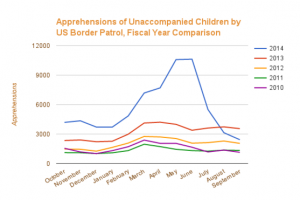
What happened to the migrants? Mexico’s Southern Border Plan
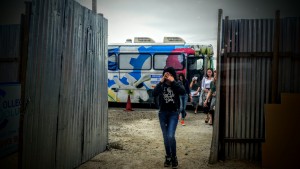
To whatever extent that analysis–that families believed that Obama was handing out “permisos” to children who arrived at the border–is true, it can only partly explain the phenomenon. The children are leaving a region plagued by poverty, insecurity and the highest murder rates in the world. United States policy towards Central America has contributed to the situation of insecurity. The Central American Free Trade Agreement (CAFTA), ratified by the Northern Triangle Countries in 2006, has displaced farmers, driven wages down and contributed to gang violence in the region, while the Central American Regional Security Initiative (CARSI), a security agreement between the U.S. and Central American countries, has empowered security forces to repress populations and contributed to rising homicide rates by training and funding abusive security forces and implicitly condoning impunity for their actions.
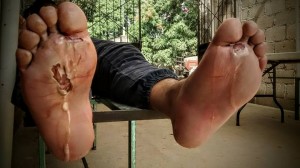 The child migrant crisis presented the United States with a significant political problem. To continue denying potential refugees protection and sending them back to countries that the United States itself had made insecure would have a huge political cost. The United States found a solution, not in changing its own policy, but in pressuring Mexico to crack down on Central American migration.
The child migrant crisis presented the United States with a significant political problem. To continue denying potential refugees protection and sending them back to countries that the United States itself had made insecure would have a huge political cost. The United States found a solution, not in changing its own policy, but in pressuring Mexico to crack down on Central American migration.
In July 2015, after meetings with US officials, Mexican President Enrique Peña Nieto announced the Southern Border Plan, a vast initiative overhauling immigration enforcement in Mexico. Although the Plan’s stated goal, according to President Peña Nieto, was to “protect the human rights of migrants as they pass through our country,” it has actually amounted to a brutal crackdown on Central American migration. Mexico sent hundreds of extra border agents to its border with Guatemala in July 2014, and began to crack down on “La Bestia,” the freight trains that Central Americans ride through the country. Some migrants may have become discouraged and returned to their dangerous homes, but others have been forced to take even more perilous routes.
Since the inauguration of the Southern Border Plan, deportations of Central Americans in Mexico have risen on an unprecedented level. In the first seven months of 2015, Mexico deported more than twice as many people as it had deported in the same period in 2014. Also, for the first time in 2015, Mexico has deported more Central Americans than the United States.
According to a report by the Migration Policy Institute, 2015 was the first year in which Mexican immigration authorities apprehended more Central American children than the US. However, the US only ended up deporting 3% of the Central American children it apprehended in 2014, while Mexico deports 77% of the children it apprehends. In terms of actual deportations, Mexico has deported more children to the Northern Triangle than the United States every year since 2010.
International and U.S. legal protections and procedures for refugees guarantee basic rights and safety for asylum-seekers. Mandatory hearings, and placement with sponsors during often long wait periods prevent the U.S. government from instantly deporting unaccompanied minors. Mexican immigration authorities, while subject to similar legal protections, are less accountable to national or international law. In effect, with the Southern Border Plan, the United States is paying Mexico to deal with its refugee problem.
CAFTA and CARSI: the United States’ Role in Creating Insecurity in the Northern Triangle
The Central American Free Trade Agreement (CAFTA), which went into effect in 2006, has exacerbated the already endemic poverty in the Northern Triangle. Small Central American farmers, forced to compete with subsidized US agriculture, face dispossession and displacement. As food security has decreased, Central American countries have become net food importers, while rising food prices have led to growth in hunger and poverty. Nor have promised apparel manufacturing jobs compensated for the displacement of farmers; apparel exports from the Northern Triangle to the United States have actually fallen 21% since CAFTA. The result has been staggering poverty rates: 64.5% of Hondurans, 53.7% of Guatemalans, and 34.5% of Salvadorans are living in poverty. Neighboring Nicaragua, however, which has a poverty rate of 42.9% and was also a signatory of CAFTA, has not been a major sending country for recent migrants.
What explains the divergence between Nicaragua and the Northern Triangle? Each of the Northern Triangle countries have homicide rates that register among the ten highest in the world, while Nicaragua has a lower homicide rate than Washington DC. The graph below shows a positive correlation between homicide rates and unaccompanied child emigration to the United States.
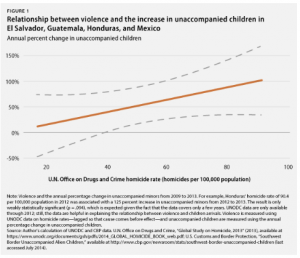
The high levels of violence in those countries is generally attributed to conflicts between the 18th Street gangs and Mara Salvatrucha, gangs that were founded in Los Angeles in the 1980s and expanded to Central America after their members were deported there.
The Northern Triangle has struggled with high rates of violence since its civil wars in the 80s, but the problem has been exacerbated by US drug war policy in recent years. Major U.S. support for Central American governments battling drug cartels began in 2008 with the Mérida Initiative, and increased further in 2010, when the Central American Regional Security Initiative (CARSI), until then the Central American component of Merida, became an independent program. The tens of millions of dollars that Central American governments received under CARSI did little to weaken the drug trade, but much to exacerbate violence.
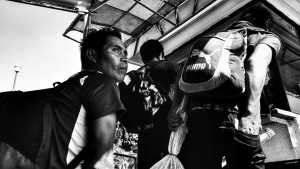 In Honduras, for example, drug trafficking has thrived since the 2009 U.S.-backed coup that ousted President Manuel Zelaya, becoming, in the words of one writer, a “drug traffickers’ paradise.” Homicide rates also have climbed, increasing by 50% between 2009 and 2011, and winning Honduras the title of the country that is not at war with the highest homicide rate in the world. The annual murder rate climbed alongside the annual security aid that Honduras received from the United States. Both the murder rate and U.S. security aid peaked in 2012.
In Honduras, for example, drug trafficking has thrived since the 2009 U.S.-backed coup that ousted President Manuel Zelaya, becoming, in the words of one writer, a “drug traffickers’ paradise.” Homicide rates also have climbed, increasing by 50% between 2009 and 2011, and winning Honduras the title of the country that is not at war with the highest homicide rate in the world. The annual murder rate climbed alongside the annual security aid that Honduras received from the United States. Both the murder rate and U.S. security aid peaked in 2012.
In December of 2015, the United States Congress approved the Alliance for Prosperity, an aid package that allocates $750 million over the rest of fiscal year 2016 to improve security conditions in the Northern Triangle. The Alliance for Prosperity will rejuvenate many of the failed strategies of CARSI with a larger budget. Before the Alliance had passed congress, the MesoAmerican Working Group, a coalition of Latin American civil society organizations including the Americas Program, published a statement of opposition to the Alliance for Prosperity. They predicted that the economic measures in the Alliance will exacerbate inequality and poverty, while its provisions for border militarization will lead to increased human rights abuse towards migrants.
The Ongoing Crisis: a Longer View
 The unaccompanied minor migration crisis of the summer of 2014 was in fact several years in the making. It and can be better understood by looking at patterns of Central American migration over longer time periods. Large scale Central American migration to the United States started during the civil wars of the 1970s and 80s. The immigration continued after the civil wars ended in the 90s: the population of Central American immigrants in the United States nearly doubled between 1990 and 2000, and grew by 50% between 2000 and 2010. A large majority (85%) of Central American immigrants are from the Northern Triangle of Guatemala, El Salvador and Honduras.
The unaccompanied minor migration crisis of the summer of 2014 was in fact several years in the making. It and can be better understood by looking at patterns of Central American migration over longer time periods. Large scale Central American migration to the United States started during the civil wars of the 1970s and 80s. The immigration continued after the civil wars ended in the 90s: the population of Central American immigrants in the United States nearly doubled between 1990 and 2000, and grew by 50% between 2000 and 2010. A large majority (85%) of Central American immigrants are from the Northern Triangle of Guatemala, El Salvador and Honduras.
The rise in the number of unaccompanied Central American children arriving at the southwestern border of the United States began in 2011. Beginning in October of 2011 the U.S. government reported a significant rise in the number of underage migrants coming from El Salvador, Guatemala and Honduras from 4,059 in fiscal year 2011 to 10,443 in fiscal year 2012 to 21,527 in fiscal year 2013, culminating with the surge of 51,705 in fiscal year 2014.
Although the acute surge in the spring of 2014 brought the migration crisis to the public awareness, the situation had already reached crisis proportions in 2011, and shows no signs of stabilizing. The crisis better reflects the increased levels of child migration that started in 2011 and continue today than the surge of mid-2014.
The Southern Border Plan is not a long-term solution because it does not address the root causes of the problem. The number of migrants reaching the United States lulled immediately after the crackdown on La Bestia and deportations from the Mexican border, but migrants are finding new ways to reach the U.S. border. New statistics suggest that the crisis could intensify in 2016. Border Patrol reported a concerning rise in the number of unaccompanied children detained at the border in October and November 2015. More than twice as many children were detained at the southwest border in those two months than in the same period in 2014.
These numbers are particularly alarming because illegal immigration usually decreases in the winter months, but the October-November two month period actually shows growth relative to the August-September period. Border Patrol has opened new detention centers to house the migrants that have come in recent months and expects the rise to continue into 2016. Even if there is no surge in 2016 like there was in 2014, the crisis continues and will not end as long as the Northern Triangle countries remain in situations of desperate poverty and violence.
As his term ends, President Obama has taken a stand on refugees, arguing that people fleeing the Syrian Civil War should be accepted into the United States. Even though polls show the position is unpopular, the president has defended it on moral grounds. On Nov. 18, he tweeted, “Slamming the door in the face of refugees would betray our deepest values. That’s not who we are. And it’s not what we’re going to do.”
The president should make his political positions consistent and follow international refugee law by providing full and fair refugee hearings with legal representation for migrants from the Northern Triangle and assuring that the Mexican government does the same. The conditions the migrants face in their home countries, in large part as a result of past and present US policies, make them subject to refugee status and international protection.
Assuming responsibility for the policy errors that led to those conditions, rather than cracking down on the victims, is the only ethical and compassionate response to a refugee crisis with no end in sight.
Editor: Laura Carlsen
Photos: Ruben Figueroa/Movimiento Migrante Mesoamericano
Angela Wolfe is an Adjunct Professor at the University of Delaware. Simon Schatzberg is a former intern of the CIP Americas Program www.americas.org



